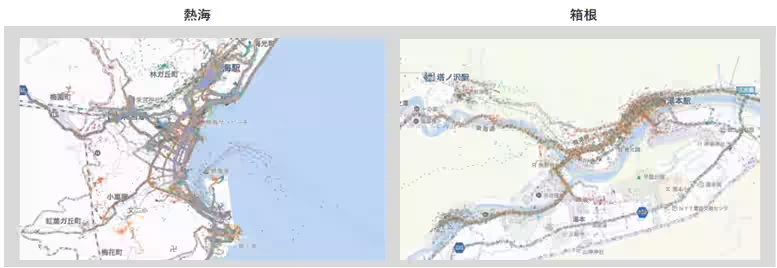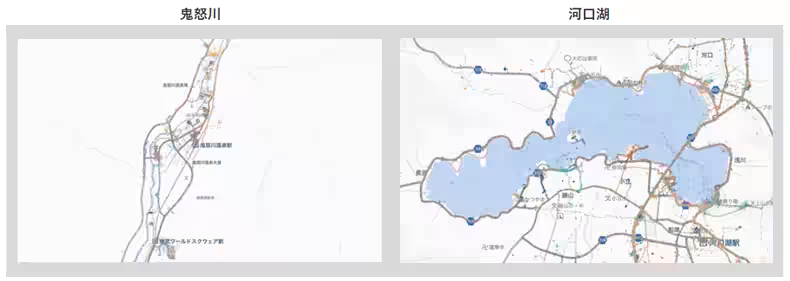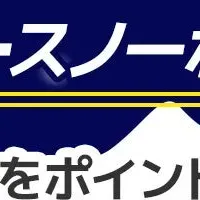

Geotechnology and JTB Collaborate on Visitor Trends in Kanto Onsen During Golden Week
Geotechnology and JTB Study Visitor Trends in Kanto Onsen
Geotechnology Co., Ltd. and JTB Corporation have collaborated to investigate visitor trends in six popular onsen (hot spring) areas of Kanto during Golden Week 2025 (GW). These areas include Atami, Hakone, Ikaho, Kusatsu, Kinugawa, and Kawaguchi Lake. The survey focused primarily on residents of the Kanto region, revealing a 5.7% increase in overall visitor numbers compared to 2024, with Kinugawa experiencing a remarkable 26.2% rise and Ikaho seeing 17.6%.
This uptick in visitors can likely be attributed to various factors, including the staggered holiday structure and recent inflation trends discouraging long-distance travel. As a result, more individuals opted for convenient trips to accessible hot spring locations within the Kanto area.
Significant Growth in Kinugawa and Ikaho
In examining the travel patterns during GW 2025, the data indicated a 5.7% increase across the six regions compared to the previous year. The rise was especially profound in Kinugawa (26.2% increase) and Ikaho (17.6% increase). These areas have potentially benefited from being viewed as 'hidden gems' by travelers looking to avoid the high prices and large crowds often associated with tourism in more prominent regions.
When assessing congestion rates during GW, average increases across Japan stood at 12.7%. However, Kawaguchi Lake saw an extraordinary jump of 19.6%, while Kinugawa only registered a minimal increase of 0.9%. The age demographics of visitors also varied: Hakone attracted a younger demographic, with 31.6% of visitors aged 29 and under, whereas Kinugawa's proportion of young visitors was only 20.7%.
Regional Differences in Visitor Satisfaction and Stay Rates
Beyond basic visitor counts, this study aims to contribute to sustainable tourism development and address issues such as overtourism. The analysis focused on four critical performance indicators (KPIs) crucial for assessing tourism strategies: travel spending, total overnight guests, visitor satisfaction, and repeat visitation rates. By combining visitor data with survey responses, a multi-faceted analysis was conducted.
Kinugawa showcased the highest overnight stay rate at 42.7%, indicating a strong preference from families. Conversely, both Hakone and Kawaguchi Lake showed lower rates due to more day trips and short visits. Hakone also exhibited a repeat visitation rate of 62.4%, suggesting it is a conveniently accessible destination for many travelers.
All six areas reported high visitor satisfaction, with Kusatsu being rated the highest, reflecting its enduring appeal. It is speculated that while Kinugawa attracts fewer young visitors, its family-oriented accommodation policy results in higher travel spending.
Diverse Visitor Preferences: Couples vs. Families
The different visitor groups and their preferred modes of transportation were also analyzed. Kusatsu was especially popular among couples, who accounted for 71% of visitors, highlighting its allure as a tranquil retreat. In contrast, Kinugawa was favored by families at 55%.
Transportation data indicated that 65% of visitors used cars, with the remaining 35% opting for trains and other public transport. Notably, Atami and Hakone had a significant reliance on train travel, which is facilitated by the convenience and accessibility of public transport in those areas.
Conclusion
This study extensively covered visitor trends in six Kanto onsen areas during GW 2025 by leveraging Geotechnology's movement data, survey results, and JTB's tourism research expertise. In an era of advancing tourism digital transformation (DX), Destination Management Organizations (DMOs) are increasingly called upon to utilize data-driven strategies and validate their effectiveness.
By revealing varied tourism needs and behavior trends across regions through this survey, actionable insights have been obtained to craft more effective tourist policies and promotional strategies. Both organizations aim to further advance tourism DX, address overtourism challenges, and develop sustainable tourism models while invigorating local economies.
Research Methodology
- - Overview: Based on JTB's tourism research expertise, Geotechnology analyzed movement data and conducted surveys utilizing the Trimah app.
- - Study Period: April 27 - May 6, 2025
- - Areas Covered: Atami, Hakone, Ikaho, Kusatsu, Kinugawa, and Kawaguchi Lake
- - Data Collected: Demographics, travel companions, congestion information, visit frequency
- - Methodology: Location data analyzed using smartphones' GPS (N=18,386), along with survey responses via the Trimah app (N=991).
For further inquiries, contact:
Geotechnology Co., Ltd.
Corporate Strategy, Corporate Communications
[TEL: 03-6374-2583]
JTB Area Solutions
Email: [email protected]
(9:30 AM - 5:30 PM, closed 12/30 - 1/3 and weekends/holidays)








Topics Travel)










【About Using Articles】
You can freely use the title and article content by linking to the page where the article is posted.
※ Images cannot be used.
【About Links】
Links are free to use.